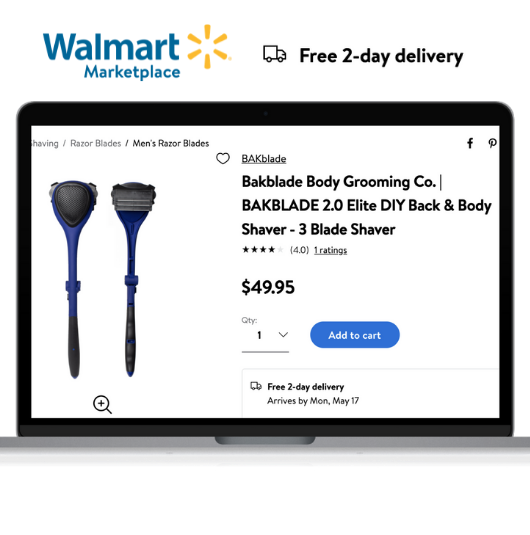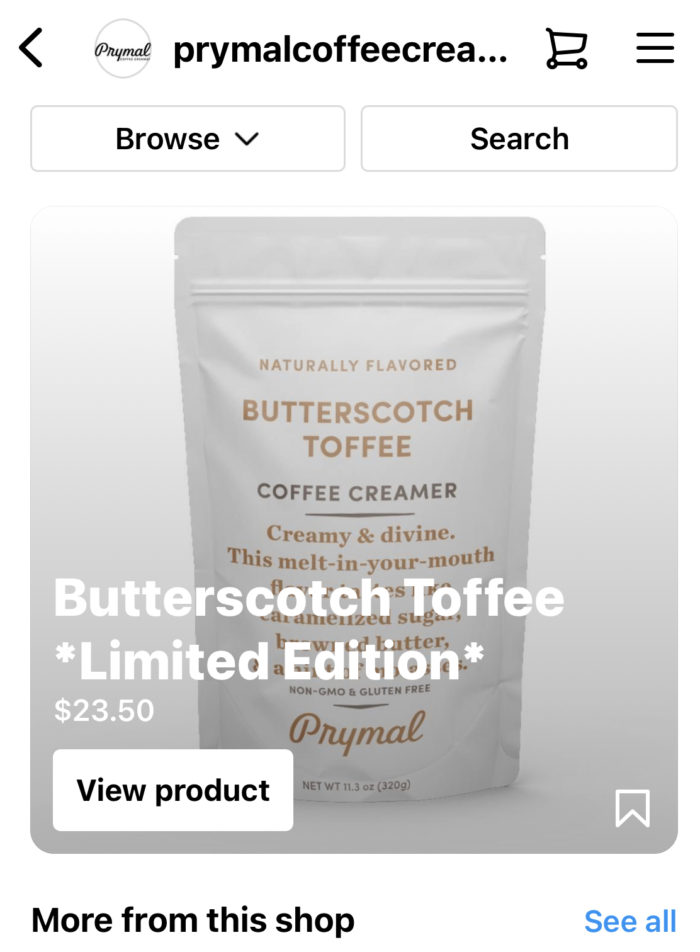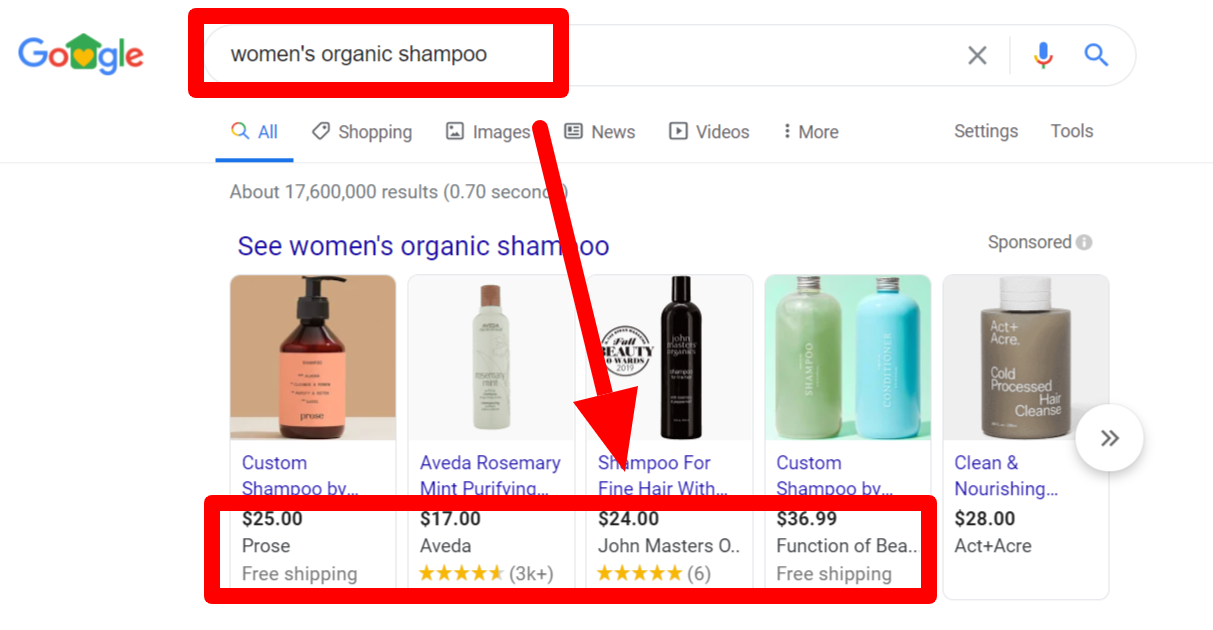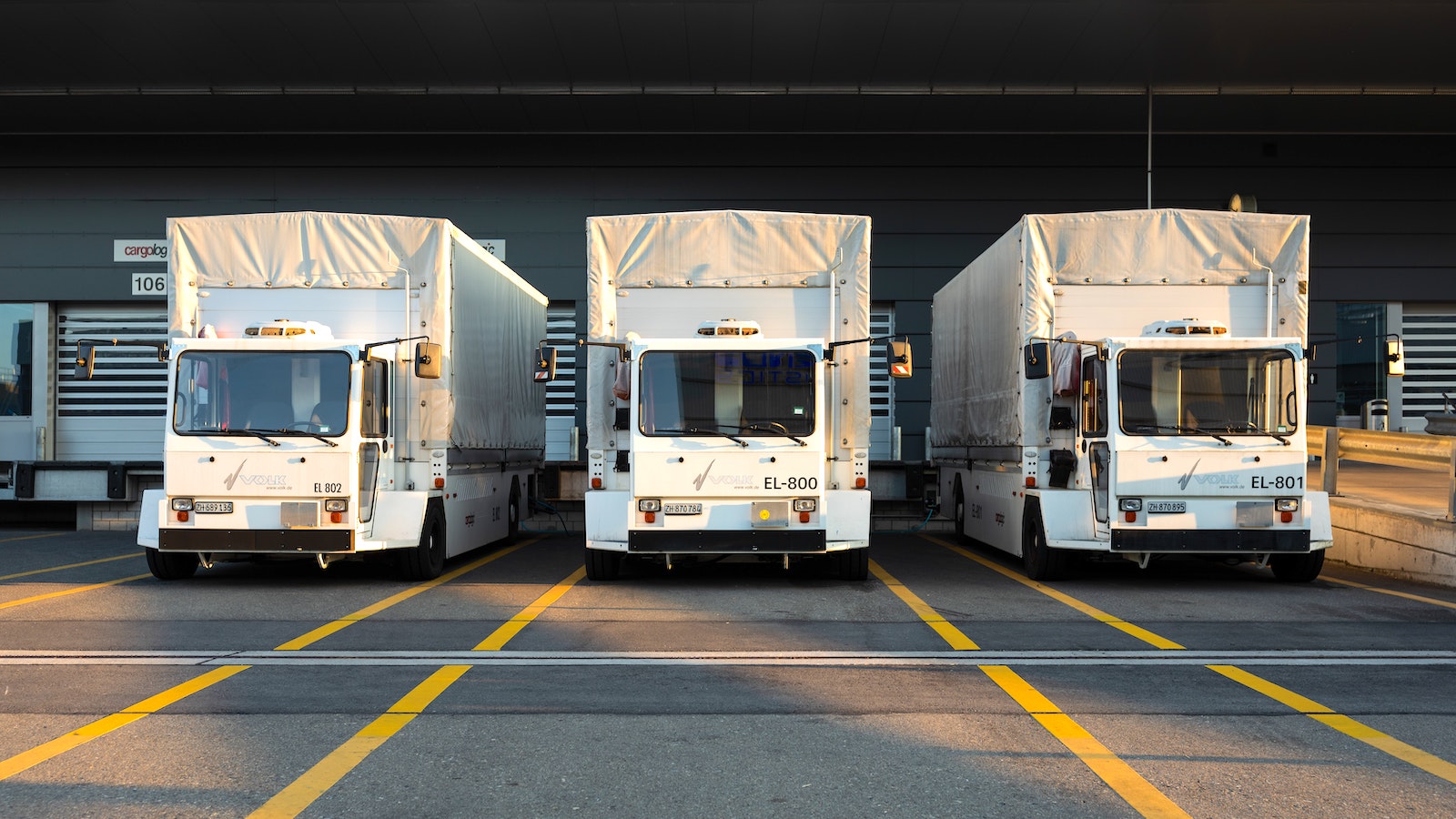Table of Contents
** Minutes
What is multi-channel ecommerce?
Why multi-channel ecommerce is growing
Top channels brands are selling on
Top solutions for multi-channel ecommerce
In store. On a website. Through an online marketplace. Via Instagram.
These are a few of the many ways consumers can purchase from brands today.
While selling through one sales channel was a common way to get by or make it as an ecommerce brand several years ago, it’s not going to cut it today for those with big growth ambitions.
As the ecommerce landscape continues to expand, consumers now have an assortment of options on how to shop online — whether it’s directly from an online brand’s website, scrolling through products seen on TikTok or Instagram, or searching for a specific item on major marketplaces like Amazon or Walmart.
Though buying behaviors vary, there’s one common behaviour amongst all online shoppers — rather than going through the trouble of seeking out your brand, online shoppers often stumble upon direct-to-consumer (DTC) brands that can meet them on the channels they already interact with.
That’s why establishing a multi-channel ecommerce strategy is a necessity for sustaining long-term growth for DTC brands.
In this article, we take a closer look at multi-channel ecommerce – what it is, why it’s so important in today’s ecommerce landscape, and how you can manage a multi-channel operation to deliver an exceptional customer experience.
Let’s get started.
What is multi-channel ecommerce?
Multi-channel ecommerce is the practice of using more than one sales channel to reach customers and sell more products to diversify your reliance on a single online store.
The multi-channel strategy involves using your online store as a hub with multiple sales channels and platforms connected. This way, products you sell and have in stock are also listed on multiple sales channels for higher visibility and a wider reach.
Offering products on several different sales channels makes it more convenient for customers to purchase products through the channel of their choice (and introducing your product to new customers who otherwise would not be familiar).
These sales channels are often a blend of marketplace listings, social media sites, retailers websites and brick-and-mortar stores, and other online shopping channels.
Why multi-channel ecommerce is growing
Creating a multi-channel presence enables you to increase sales, expand brand awareness, and enhance the customer experience through practicality and convenience.
However, managing multiple sales channels can be extremely complex and challenging. But the continued success of multi-channel ecommerce proves that the benefits clearly outweigh the challenges (plus, we’ll share some tips on how to improve multi-channel ecommerce management).
eMarketer predicts that multi-channel ecommerce sales will grow by 18.8% in 2021, reaching $417.18 billion. If you’re currently selling solely through your online store (or another channel like Amazon), it might be time to expand to gain more visibility and increase sales.
Here are some of the biggest reasons why multi-channel ecommerce continues to grow:
Increases brand visibility
Building your brand presence across multiple channels means you’re putting your company and products in front of a wider audience, thus increasing your brand’s visibility.
It’s also another point of exposure, since we know through attribution and tracking, it can take many interactions with your brand before a customer ever purchases. The more they see you around and in new places, the more familiar they will become with you and potentially inclined to finally make the purchase.
Increased brand visibility cam naturally translates to more potential customers in organic ways. A great example of brand visibility in action is the use of social media — you’re able to interact with your customers more and encourage them to share your brand’s content with their network, which also enables social proof.
Helps meet customer expectations
These days, shoppers expect brands to offer flexibility in terms of when and where they buy products.
Having a multi-channel presence allows you to deliver on this expectation by meeting your customers where they are and providing them a convenient way to buy what they want, when and where they want it.
Increases sales potential
DTC brands that use three or more sales channels have a 287% higher purchase rate than campaigns using a single channel.
Providing online shoppers the ability to buy your products directly from the channel they’re on removes the hassle of switching to your online store to make the purchase (or having to go into a store in person, or create a new account to buy on a new site) to remove complexities from the buyer’s journey.
Direct purchasing via different channels overall decreases the likelihood of cart abandonment as customers can seamlessly complete their purchases in just a few clicks.
Top channels brands are selling on
Online brands have so many options when it comes to choosing channels to sell on. Even if it’s not possible to sell across every single available channel, brands should at least choose a few top channels to sell through, rather than relying on direct traffic to their online store.
Amazon
As the largest ecommerce marketplace, Amazon can get your brand in front of millions of loyal shoppers. Combined with the right marketing strategies, selling on Amazon can be a great way to boost brand visibility.
But with popularity also comes competition. The fast-growing marketplace attracts sellers as much as it does shoppers, so you might find yourself struggling to stand out.
Shoppers choose to purchase through Amazon for fast, affordable shipping. However, the expensive inventory placement and order fulfilment costs are another major consideration if you choose an option like Fulfilment by Amazon (FBA).
That’s why ShipBob offers Fulfilment by Merchant (FBM). If you decide to sell via Amazon, ShipBob recommends diversifying your fulfilment options (e.g., use both FBA and FBM) to maximise sales. Learn why sellers have moved off of Amazon to ShipBob for FBM here.
“In contrast to working in the Amazon fulfilment dashboard, which looks like a Bloomberg terminal upon opening it, the ShipBob dashboard is awesome and extremely user-friendly.”
Steve Staffan, Founder and CEO of Brummell
Walmart Marketplace
Walmart Marketplace is a channel for third-party sellers to sell their products to Walmart.com shoppers.
Like Amazon, this marketplace also gives you the opportunity to reach millions of customers through a trusted name in the retail industry.
The biggest pro is that the competition isn’t as tough as on Amazon since Walmart has a steep entry barrier for sellers. But that also makes it a lot harder for just any brand to sell on Walmart Marketplace.
As long as you meet the requirements, however, you get to enjoy Walmart Fulfilment Services and provide exceptional delivery experiences.
You can even work with Walmart.com official 3PL partner like ShipBob, which offers the ability to enable two-day delivery across the continental US at an affordable price.
“As we expand our online presence into Canada, both directly and selling through Walmart, we knew we needed a trusted fulfilment partner.”
Marc Fontanetta, Director of Operations at BAKblade

Etsy
An online marketplace dedicated to selling handmade and customised goods, Etsy is a great channel that connects you with millions of shoppers worldwide.
But keep in mind that you can only sell products that you made, as well as memorabilia, vintage items, and craft supply (including raw materials). Before you choose Etsy, be sure to check out the Seller’s Policy.
If you sell handcrafted goods, Etsy is a great sales channel that gets you in front of the right audience. It also offers easy setup and maintenance, which also makes it a great option for small-scale businesses and startups.
Instagram Shopping
Instagram Shopping is a feature that allows retailers to integrate their product catalogue with their Instagram page. This then enables Instagram users to buy the products without ever leaving the app.
The seamless shopping experience is a great way to enhance customer experience and reduce customer drop-offs.

One drawback is since the purchase happens within the app, Instagram retains control over the customer data.
Facebook Shop
Like Instagram, you can also create a storefront on Facebook called a Facebook Shop. This allows Facebook users to browse through your products and make purchases without ever leaving the platform.
The ability to reach millions of Facebook users are some of the biggest pros to this channel. But keep in mind that Facebook has strict requirements that sellers have to meet to start selling through a Facebook Shop.
eBay
Another major marketplace, eBay gives you access to millions of buyers from all over the world. And you can sell anything on the platform – from electronics to collectibles.
However, the uncertain (and often steep) seller fees make this platform a risky option if you’re selling products with low profit margins.
Google Shopping
Brands can also list their products under the “Shopping” tab of Google search results. So when people search on Google for a certain product, relevant items from their product catalogue will show up for people to browse and buy. And you only get charged when someone clicks on your product.
Google Shopping is an excellent way to attract shoppers instantly from the search results pages.
And since they’ll be able to view similar items from other websites on the same page, it gives them the convenience of doing quick comparisons to make informed buying decisions.
You can make your listings stand out with high-quality images, pricing details, and 2-day shipping labels.

From retailers’ online stores
While brick-and-mortar shopping is not dead (and has picked up a bit since earlier in the pandemic), another major trend for buyers has been flocking to these retailers’ online stores to make purchases.
Known as retail dropshipping, this is a direct-to-consumer fulfilment method for orders placed on a retailer’s ecommerce site that get fulfilled by the brand (or their 3PL like ShipBob).
This allows brands to partner with retailers like Target, Neiman Marcus, Macy’s, Nordstroms, Kroger, Nordstrom Rack, ULTA Beauty, and Bed Bath & Beyond, who sell products on their online stores, and the brand or 3PL ships those orders to those end customers.
“ShipBob’s ability to service both D2C and B2B has enabled us to build more consistent procedures and practices across our different sales channels.
Along with Chewy, we’re also fulfilling orders through Amazon, as they are the two biggest online pet sales channels in the US.
We utilise ShipBob’s EDI solution that is connected to our 3rd party EDI platform SPS Commerce for our Chewy orders, and when we don’t ship directly to Amazon, we rely on ShipBob’s direct integration with Amazon for FBA orders.
We’re even exploring additional channels that ShipBob supports, such as Walmart.com.
Being an omnichannel brand is critical for us, so we can reach more pet lovers from more places. We’re glad that ShipBob helps us keep up with demand from all the places we reach our customers.”
– Stephanie Lee, COO at PetLab Co.
Top solutions for multi-channel ecommerce
Once you decide which sales channels to sell on, you’ll need to implement the right systems and supply chain technology to help you manage your multi-channel ecommerce strategy.
From managing your product listings to making sure you have enough inventory to meet demand – everything gets a little more complicated when you’re selling through more than one channel.
To help you streamline your efforts, we’ve put together some of the best multi-channel ecommerce solutions on the market.
| Multi-channel needs | Software solutions* |
| Multi-channel inventory management | Brightpearl, Zentail, Skubana, Linnworks |
| Shipping & fulfilment | ShipBob |
| Returns management | Returnly, Loop Returns |
*These solutions all offer direct integrations with ShipBob.
Multi-channel inventory management
Your multi-channel ecommerce software or 3PL should let you integrate all your sales channels, inventory, and fulfilment centres into a single dashboard.
This way, you can consolidate real-time inventory insights and track and manage inventory across all your sales channels and storage locations from one dashboard.
Your inventory management software (or 3PL’s software if you outsource fulfilment) should also automate tasks such as pulling insights for inventory forecasting, making it easy to pull inventory reports, and provide the ability to set automatic reorder points based on predetermined thresholds and demand.
Some inventory management solutions also provide SKU management and catalogue management features to help you manage your listings across channels.
Considering these factors, the top tools for multi-channel inventory management include:
- Zentail – Zentail comes with multi-channel inventory tracking features to automatically reflect accurate quantities across all platforms, which will help you avoid the risk of overselling on any channel. The AI forecasting tool also ensures that you always keep the right amount of inventory for every SKU.
- Skubana – Skubana integrates all your sales channels so you can manage your orders and inventory from a single dashboard. It provides you with real-time inventory updates using consistent metrics across all channels and allows you to keep track of stock levels, inventory on-hand, and units sold.
- Brightpearl – Brightpearl is an omnichannel retail management system that puts your orders, inventory, financials, POS, and CRM in one place. Whether you are managing multiple inventory locations or inventory across a number of different channels, inventory levels are automatically updated.
- Linnworks – Linnworks helps online brands manage multi-channel inventory workflows and syncs orders coming from different selling channels to ensure real-time view of inventory levels. Linnworks makes it easy to manage product listings, which can be disabled as stock sells out on one channel and automatically reactivate when inventory is replenished.
Fulfilment and shipping
Multi-channel fulfilment is an important consideration if you want to optimise your supply chain to create a consistent experience for all customers — no matter where they purchase your products.
A multi-channel fulfilment solution enables you to sync your sales channels to the same fulfilment software. This way, all orders are processed and sent to the closest fulfilment centre to be picked, packed, and shipped through the most optimise, affordable last-mile delivery route.
For instance, ShipBoblets you streamline multi-channel fulfilment by strategically storing your inventory across different fulfilment centres, automatically selecting optimal routes and couriers, and sending them out from the fulfilment centre closest to your customers.
ShipBob has integration with all the top ecommerce platforms, marketplaces, and other sales channels to centralise inventory, order, and shipment management. For example, with Shopify inventory management, ShipBob can fulfil multi-channel orders and help minimise overselling on Shopify with the following tools:
- Shopify Real-Time Order Sync: Faster order import means faster fulfilment for shoppers and improved inventory count accuracy for merchants. ShipBob’s Shopify integration enables orders from Shopify to sync in real-time to your ShipBob dashboard.
- Inventory Quantity Sync: This compares inventory counts in ShipBob and Shopify every 15 minutes, and uses smart logic to only update the quantity in Shopify if ShipBob shows lower stock levels, or if ShipBob has a stock increase due to restocking, warehouse receiving orders, etc.
- Inventory Threshold: This creates a safety buffer to help you minimise overselling, keeping a set amount of inventory reserved. Once you specify the buffer quantity and your inventory count hits that threshold, ShipBob will post zero units available back to Shopify.
Returns management
Managing returns can be a complex process, as it involves tasks such as restocking the returned items or disposing of them if damaged, sending replacements or issuing refunds (as well as the cost of a second shipment), recording the return reasons (and taking action if it’s a product error, product page optimisation, etc.), and so much more.
Of course, requirements for returns can vary by platform and retailer. To complete the multi-channel ecommerce process, having a system that tracks and manages all returns from one place can help you save time and money.
Here are the top solutions that can help you with managing ecommerce returns:
- Returnly – Returnly enhances the customer experience by providing your customers with the right product before returning the incorrect item. Returnly empowers your customers to set up easy and quick returns (and integrates with ShipBob’s system to accurately maintain your records).
- Loop Returns – Shopify brands can use Loop to make returns, save you time, andencourage customers to exchange items, rather than get a refund. With Loop and ShipBob, you can keep your team in sync by approving returns and exchanges, automatically.
“About a year and a half after building out our business, we figured it was time to optimise some of our processes, including returns. The ability to work with one of the co-founders of ShipBob to launch a new, custom returns process was awesome.
Returns were taking a lot of time and resources to process on our end, but ShipBob was super helpful and critical in creating a solution for us.”
Nikolai Paloni, Co-Founder of Ombraz Sunglasses
ShipBob makes selling across multiple channels a breeze
ShipBob is a world-class fulfilment partner and logistics solution that offers a multi-channel distribution solution for fast-growing online brands.
As the leading fulfilment solution for multi-channel brands, ShipBob integrate with not only ecommerce stores, marketplaces, and EDI partners, but also can fulfil orders from other popular multi-channel programs like Google Shopping and social media platforms.
ShipBob helps fulfil not only online orders but also has a B2B Fulfilment Suite, enabling merchants to sell throughout the entire B2B ecosystem, powering retail dropshipping (fulfilling orders placed on big box retailers’ websites) and wholesale shipping (including brick-and-mortar stores), which can connect with all the major retailers.
By processing orders placed on different channels and fulfilling them from the nearest fulfilment centres, ShipBob enables you to provide a seamless multi-channel experience as you expand into new sales channels and distribution centres.
ShipBob also lets you establish a robust multi-channel logistics strategy with direct integrations to leading ecommerce solutions, as well as a Developer API for a custom build. We also offer B2B fulfilment and EDI capabilities, which make it easy to manage your B2B ecommerce orders all in one place.
“Since partnering with ShipBob, we now have an automated system for shipping and can focus our time on new product launches.
We continually are able to reliably and quickly fulfil thousands of orders during a single apparel drop.
This partly has to do with ShipBob saving us time by automating the order fulfilment process.”
Jason Ton, CFO of 100 Thieves
Take a glimpse into our fulfilment operations below:
By partnering with ShipBob, you can easily streamline fulfilment across multiple sales channels, track inventory in real time from a single dashboard, and save time and money by leaving logistics up to the experts.
Get the process started by requesting custom pricing.
Multi-channel ecommerce FAQs
Below are answers to the top questions about multi-channel ecommerce.
What are the benefits of multi-channel ecommerce?
Multi-channel ecommerce allows you to meet your customers where they are by selling products on different places online, enhancing the shopping experience and creating more sales opportunities while increasing brand visibility.
Is multi-channel ecommerce more profitable?
Multi-channel ecommerce is more profitable than single-channel ecommerce, as it allows you to reach more customers and sell more by making the purchasing process more convenient for online shoppers (i.e., they can buy from you via their choice of storefront). It also enhances brand visibility by showcasing products on channels that already have a large volume of active and engaged users. While profit margins vary by channel (e.g., from differen third-party fees), more sales can still offset additional costs.
Is multi-channel retail the same as multi-channel ecommerce?
Multi channel retail involves selling through multiple channels including offline sources (e.g., at a brick-and-mortar Target store), while multi-channel ecommerce is confined to online sales channels. While the exact definitions vary depending on who you talk to, omnichannel and multi-channel are often use interchangeably to describe selling from or on more than one platform. Retail is typically affiliated with retailers (i.e., brick-and-mortar storefronts), but even big-box retailers are getting more into selling independent brands’ products on their online stores, further blurring the lines. Regardless, both concepts refer to diversifying your sales mix to reach more customers.
What are the best multi-channel platforms?
There are several multi-channel platforms for ecommerce. The type of platforms you choose should all sync together to create an end-to-end ecommerce solution. For instance, if you have a Shopify store, you can connect it to ShipBob, a fulfilment solution that also offers direct integrations with other selling platforms including Amazon, Walmart.com, and even EDI partners to connect to B2B/wholesale channels for both online and in-person sales. This way, all orders from multiple sales channels are routed through the same fulfilment process.



